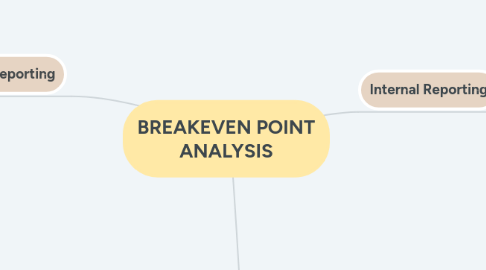
1. External Reporting
1.1. Costs are classified according to function- this is based on IFRs.
1.2. Cost of Goods Sold
1.3. Production Area
1.4. Variable Cost
1.4.1. 1) Cost which varies in total but fixed in per unit bases 2) The changes in total variable costs is directly proportional to the units produced or sold 3) Direct material, direct labor, variable overhead and variable selling and admin expense
1.5. Fixed Cost
1.5.1. 1) These are costs that are fixed in total but will vary in per unit basis. The changes in unit variable cost is indirectly proportional to the units produced or sold. 2) Fixed Overhead and Fixed selling and Admin Expense
1.6. Sales 100,000 10% Cost of Sales 60,000 60% Gross Income 40,000 40% Operating Expense 10,000 10% Income Before Tax 30,000 30%
2. Breakeven Point- the point of no income and no loss.
3. Internal Reporting
3.1. Costs are classified according to behavior- for better management decision making
3.2. 1. Equation Method or Algebraic Method
3.2.1. TOTAL SALES- TOTAL VARIABLE COST- TOTAL FIXED COST= NET INCOME ((UNIT SELLING PRICE- UNIT VARIABLE COST) x UNIT SOLD)-FIXED COST= NET INCOME (UNIT CONTRIBUTION MARGIN x UNITS SOLD) – FIXED COST- NET INCOME
3.3. 2. Formula Method
3.3.1. Breakeven Point (units) = Fixed Cost/ Unit Contribution Margin Breakeven Point (Pesos) = Fixed Cost/ Contribution Margin Ratio Sales (Units) = (Fixed Cost + Desired Income)/ Unit Contribution Margin Sales (Pesos) = (Fixed Cost + Desired Income)/ Contribution Margin Ratio Sales (Units) = (Fixed Cost + Desired Income/1- Tax Rate)/ Unit Contribution Margin Sales (Pesos) = (Fixed Cost + Desired Income/ 1- Tax Rate) / Contribution Margin Ratio
